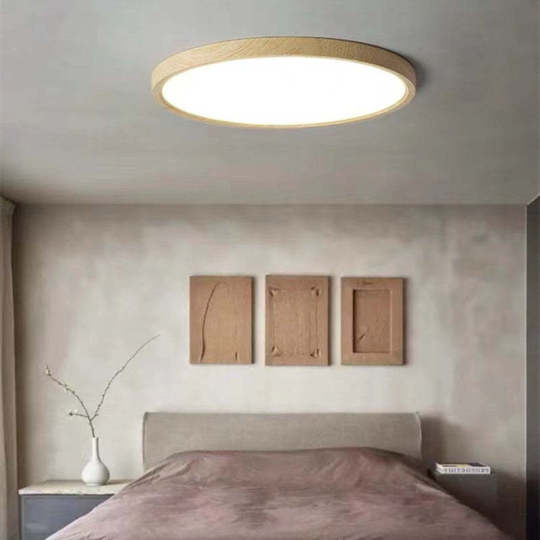Transform Your Space: Discover the Secrets of Captivating Bedroom Lighting!
When it comes to creating a sanctuary in your home, bedroom lighting plays a pivotal role that often goes unnoticed. The right lighting can elevate your mood, enhance the functionality of your space, and even contribute to your overall well-being. From cozy evenings spent reading in bed to energizing mornings as you prepare for the day, the way you light your bedroom can dramatically influence your experience. In this article, we will delve into the various types of bedroom lighting available and offer practical tips on how to effectively use them to transform your space into a haven of comfort and style.

Understanding Bedroom Lighting
Bedroom lighting is more than just a practical necessity; it serves multiple purposes that can enhance the way we use our space. Generally, bedroom lighting can be categorized into three main types: ambient, task, and accent lighting. Ambient lighting provides the overall illumination of the room, ensuring that it is well-lit and inviting. Task lighting, on the other hand, focuses on specific areas where activities such as reading or working take place, ensuring that these tasks can be performed without straining your eyes. Finally, accent lighting adds flair to your bedroom decor, highlighting artwork or architectural features, and creating a layered lighting effect. Understanding these different roles is essential for creating a well-balanced lighting scheme that meets your needs.
Types of Bedroom Lighting
There are numerous options when it comes to bedroom lighting, each contributing its unique character and functionality. Ceiling fixtures, such as chandeliers or flush mounts, can serve as the primary source of ambient light while adding a touch of elegance to the room. Bedside lamps are indispensable for task lighting, providing focused light for reading or late-night activities. Wall sconces can be mounted above nightstands or along walls to save space and add visual interest, while floor lamps offer versatility in both design and placement, allowing you to create cozy corners for relaxation. By mixing and matching these different types of lighting, you can create a harmonious atmosphere that caters to your personal style and needs.
Ambient Lighting
Ambient lighting is the foundation of any well-lit bedroom, providing a soft, even glow that fills the space. Ideal fixtures for ambient lighting include ceiling-mounted lights, recessed lights, or even large floor lamps placed strategically around the room. The goal is to achieve a warm and welcoming environment that encourages relaxation. Dimmer switches can enhance this effect, allowing you to adjust the light intensity to suit various activities or moods, from bright and energetic to soft and soothing.
Task Lighting
Task lighting is crucial for activities that require focused illumination, such as reading, writing, or working on hobbies. Bedside lamps are a classic choice, but consider wall-mounted reading lights that can be adjusted to your preferred angle. Additionally, a well-placed desk lamp can illuminate your workspace if you have a designated area in your bedroom. The key is to ensure that task lighting is bright enough to avoid straining your eyes while still being soft enough not to disrupt the overall ambiance of the room.
Accent Lighting
Accent lighting is where you can really let your personality shine through. This type of lighting allows you to highlight specific areas, such as artwork, photographs, or architectural features of your bedroom. Consider using LED strip lights under shelves or around your headboard for a modern touch, or small spotlights to draw attention to a favorite piece of art. Accent lighting adds depth and dimension to your space, creating visual interest and enhancing the overall aesthetic.
Tips for Effective Bedroom Lighting
Arranging and layering your bedroom lighting is essential for creating a well-balanced environment. Start by combining ambient, task, and accent lighting to achieve a harmonious blend. Pay attention to the light temperature as well; warmer tones can induce a sense of calm, while cooler tones can be invigorating. Positioning is also key—ensure that task lights are placed at the right height and distance for optimal use. Don’t forget to incorporate dimmable options for versatility, allowing you to modify the atmosphere based on the time of day or your mood. Lastly, consider the layout of your furniture and how light will interact with the space, ensuring that you avoid dark corners and harsh shadows.
Creating a Mood with Lighting
Lighting can significantly influence the mood of your bedroom, and choosing the right styles and colors can make all the difference. For a relaxing atmosphere, opt for softer, warmer lighting that creates a cozy cocoon effect. Layering different types of light can help achieve this, allowing you to adjust the overall feel of the room based on your needs. For instance, using dimmable lamps in warm tones while incorporating accent lights can evoke a tranquil vibe, perfect for winding down at the end of the day. Conversely, if you want to energize your space in the morning, consider brighter, cooler lighting that mimics natural daylight. Experimenting with different lighting styles will help you find the perfect balance for your personal retreat.
Maximizing Your Bedroom Lighting Experience
In summary, the power of well-planned bedroom lighting cannot be overstated. By understanding the different types of lighting and their roles, you can transform your space into a haven that is both functional and inviting. From ambient to task to accent lighting, each element plays a crucial role in shaping the atmosphere of your bedroom. With the tips provided, you can experiment with your own lighting solutions, discovering what works best for you. So go ahead, illuminate your sanctuary, and enjoy the myriad of benefits that come with thoughtful bedroom lighting!














